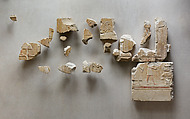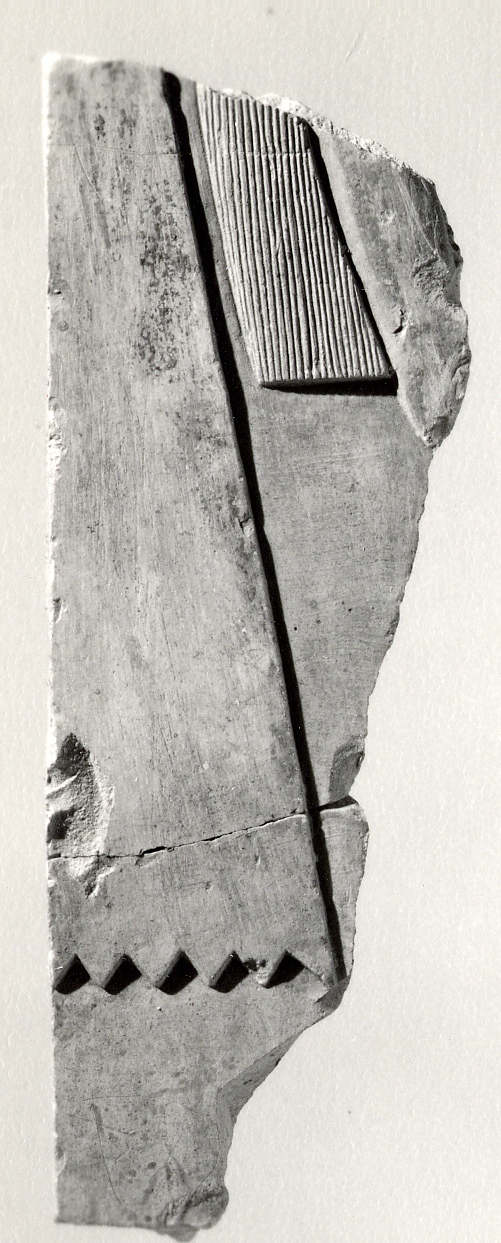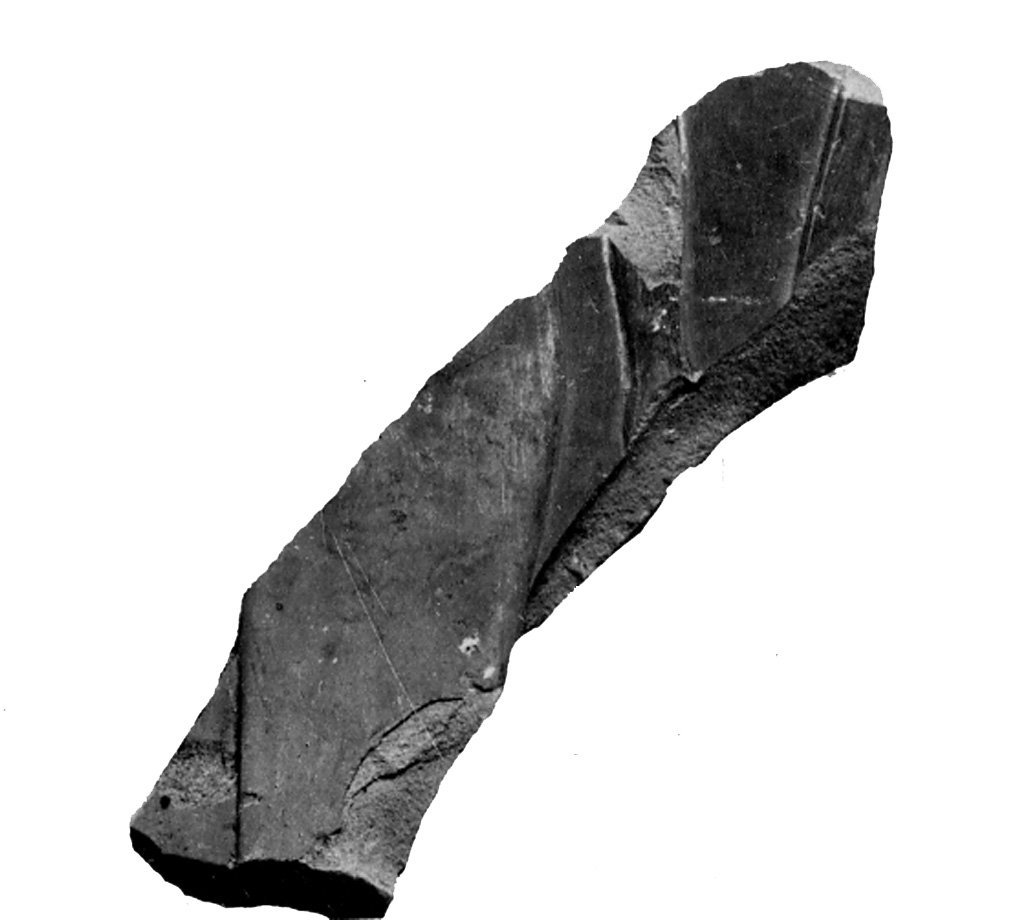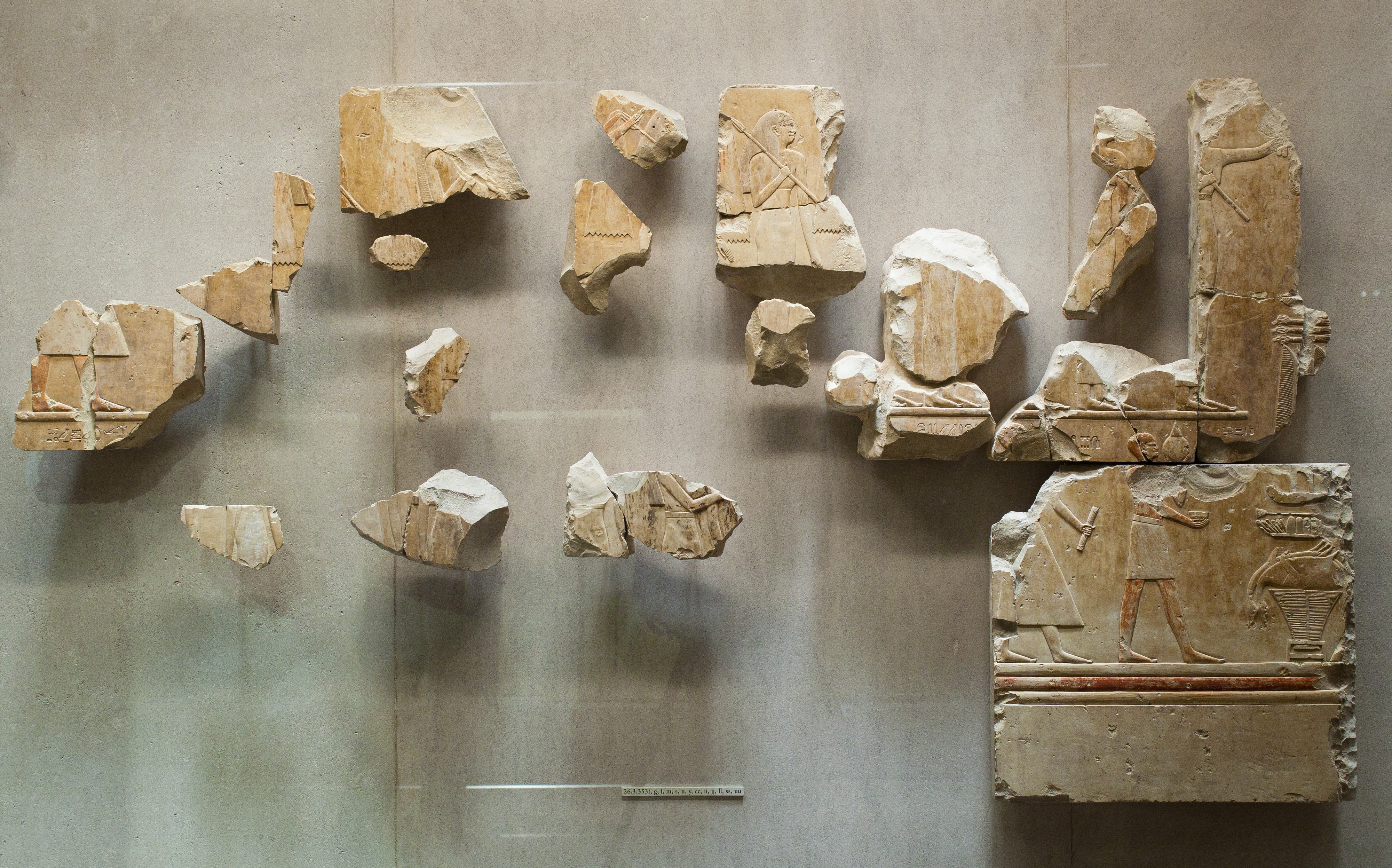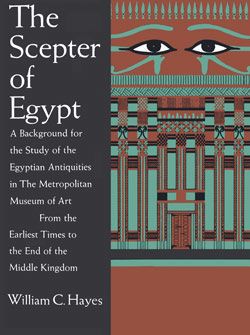Relief scene from the tomb of Queen Neferu: fragments from two registers showing male and female attendants moving to the right
Middle Kingdom
Neferu was most likely the first queen of Nebhepetre Mentuhotep II, and may also have been his sister. Her plundered tomb, excavated by the Metropolitan Museum of Art between 1923 and 1931, lay outside the king's temple precinct at Deir el Bahri. It was visited as a shrine in the Eighteenth Dynasty, and at some point it was used as a quarry for the fine limestone covering the walls.
The decoration of the funerary apartments consisted almost exclusively of ritual scenes and depictions of sacred objects deriving from local Upper Egyptian iconography. The carving of Queen Neferu’s surviving reliefs has a captivating otherworldliness, although it is varied in quality. The extenuated proportions of the figures, and the elaborate patterns contrasting with smooth planes, represent the height of the Eleventh Dynasty archaic style. The background was left unpainted, while the figures were either detailed or covered with orange, pink, purple, blue, green, white or black paint.
In this group of fragments, two rows of attendants advance from the left toward a richly endowed offering table, behind which the queen must have sat on a chair. It is interesting to note that only the male officials of the queen’s household are identified by name.The first woman in the upper register raises an elaborate menat necklace whose ends are just visible on the preserved fragment. Such necklaces were not only adornments but were also used as musical instruments in the service of the goddess Hathor, since their multiple strands of beads produced a rattling sound when shaken. Other women carry red-striped pieces of cloth, which would have served as sunshades for certain rituals.
In the lower register, the cupbearer Imennakht offers a drink; and the scribe of the chests Intef brings a papyrus roll. The figures of a man called Djaayt (title incomplete) and (to the very left) the overseer of the provisioning quarters and cupbearer, Mentunakht, are lost.
For other reliefs from the tomb of Queen Neferu, see 31.3.1 and 26.3.353*.
Due to rights restrictions, this image cannot be enlarged, viewed at full screen, or downloaded.
This artwork is meant to be viewed from right to left. Scroll left to view more.
